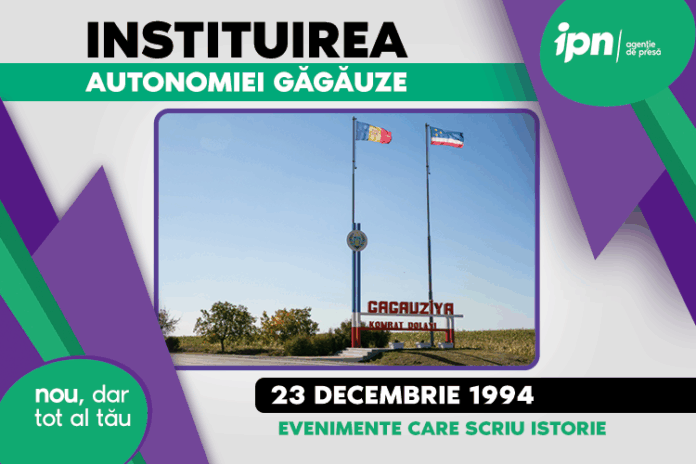The Autonomous Territorial Unit Gagauzia (Gagauz-Yeri) is an autonomous region in the south-west of the Republic of Moldova, inhabited mainly by Gagauz, an ethnic group culturally close to the Turks, but of Christian Orthodox faith. A separatist entity in the late 1980s and early 1990s, Gagauzia eventually accepted the sovereignty of Chisinau. The law on the region’s special legal status was approved more than three decades ago, on December 23, 1994, IPN reports.
Gagauz began to demand autonomy in the context of the national liberation movement in the Moldovan Soviet Socialist Republic and the break-up of the Soviet Union. In November 1989, a congress of Gagauz Gagauz proclaimed the creation of the Autonomous Soviet Socialist Socialist Republic of Gagauzia within the framework of the SSMR, and the following year the Republic of Gagauzia was proclaimed. Legal relations between Chisinau and Comrat were not regulated until late 1994.
The law on the special legal status of Gagauzia (Gagauz-Yeri) stipulates that the region has its own parliament (People’s Assembly) and executive committee, and is headed by a governor (Bashkan). Territorially, the region is divided into three districts: Comrat, Ciadir-Lunga and Vulcanesti, with the administration in Comrat.
FOR THE MOST IMPORTANT NEWS, FOLLOW US ON TWITTER!
Over the years, Gagauz autonomy has been the subject of debate and sometimes tension between the central authorities in Chisinau and Comrat. In 2014, a referendum organized in UTA Gagauzia showed overwhelming support for the region’s independence should Moldova lose its sovereignty in the context of a possible union with Romania. This referendum was considered illegal by the central authorities, but highlighted the diverging views between the two sides.
In 2019, the People’s Assembly of Gagauzia proposed amending Moldova’s Constitution to include the region’s right to external self-determination in the event of loss of statehood, but the proposal was rejected by the country’s authorities.
Geopolitically, Gagauzia is in a delicate position. Although part of the Republic of Moldova, the region has a strong pro-Russian orientation. This orientation has been evident at various times, including in advocating political positions and organizing events promoting ties with the Russian Federation.
During more than 30 years of autonomy, Gagauzia has shown a capacity for adaptation and resilience, but also a constant desire to protect its identity and interests. Geopolitical and internal challenges continue to influence the region’s course and relations with the central authorities also remain uncertain.
Despite political challenges, Gagauzia has benefited and continues to benefit from significant investment in infrastructure and public services. European funds and development programs have helped to improve the living conditions of the inhabitants, including the renovation of schools, hospitals and the modernization of water and sewage networks. In the last year alone, in 2024, 15 projects have been implemented under the “European Village” program, with a total value of 73 million lei, aimed at improving infrastructure and quality of life in the region.
Over the next two months, IPN will present the events that have shaped Moldova’s recent history. Be part of the campaign and share the “History – making Events” stories with your friends, colleagues, and family.



